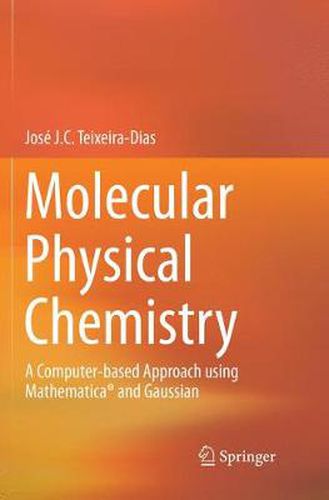Readings Newsletter
Become a Readings Member to make your shopping experience even easier.
Sign in or sign up for free!
You’re not far away from qualifying for FREE standard shipping within Australia
You’ve qualified for FREE standard shipping within Australia
The cart is loading…






This title is printed to order. This book may have been self-published. If so, we cannot guarantee the quality of the content. In the main most books will have gone through the editing process however some may not. We therefore suggest that you be aware of this before ordering this book. If in doubt check either the author or publisher’s details as we are unable to accept any returns unless they are faulty. Please contact us if you have any questions.
This is the physical chemistry textbook for students with an affinity for computers! It offers basic and advanced knowledge for students in the second year of chemistry masters studies and beyond. In seven chapters, the book presents thermodynamics, chemical kinetics, quantum mechanics and molecular structure (including an introduction to quantum chemical calculations), molecular symmetry and crystals. The application of physical-chemical knowledge and problem solving is demonstrated in a chapter on water, treating both the water molecule as well as water in condensed phases. Instead of a traditional textbook top-down approach, this book presents the subjects on the basis of examples, exploring and running computer programs (Mathematica ®), discussing the results of molecular orbital calculations (performed using Gaussian) on small molecules and turning to suitable reference works to obtain thermodynamic data. Selected Mathematica ® codes are explained at the end of each chapter and cross-referenced with the text, enabling students to plot functions, solve equations, fit data, normalize probability functions, manipulate matrices and test physical models. In addition, the book presents clear and step-by-step explanations and provides detailed and complete answers to all exercises. In this way, it creates an active learning environment that can prepare students for pursuing their own research projects further down the road. Students who are not yet familiar with Mathematica ® or Gaussian will find a valuable introduction to computer-based problem solving in the molecular sciences. Other computer applications can alternatively be used. For every chapter learning goals are clearly listed in the beginning, so that readers can easily spot the highlights, and a glossary in the end of the chapter offers a quick look-up of important terms.
$9.00 standard shipping within Australia
FREE standard shipping within Australia for orders over $100.00
Express & International shipping calculated at checkout
This title is printed to order. This book may have been self-published. If so, we cannot guarantee the quality of the content. In the main most books will have gone through the editing process however some may not. We therefore suggest that you be aware of this before ordering this book. If in doubt check either the author or publisher’s details as we are unable to accept any returns unless they are faulty. Please contact us if you have any questions.
This is the physical chemistry textbook for students with an affinity for computers! It offers basic and advanced knowledge for students in the second year of chemistry masters studies and beyond. In seven chapters, the book presents thermodynamics, chemical kinetics, quantum mechanics and molecular structure (including an introduction to quantum chemical calculations), molecular symmetry and crystals. The application of physical-chemical knowledge and problem solving is demonstrated in a chapter on water, treating both the water molecule as well as water in condensed phases. Instead of a traditional textbook top-down approach, this book presents the subjects on the basis of examples, exploring and running computer programs (Mathematica ®), discussing the results of molecular orbital calculations (performed using Gaussian) on small molecules and turning to suitable reference works to obtain thermodynamic data. Selected Mathematica ® codes are explained at the end of each chapter and cross-referenced with the text, enabling students to plot functions, solve equations, fit data, normalize probability functions, manipulate matrices and test physical models. In addition, the book presents clear and step-by-step explanations and provides detailed and complete answers to all exercises. In this way, it creates an active learning environment that can prepare students for pursuing their own research projects further down the road. Students who are not yet familiar with Mathematica ® or Gaussian will find a valuable introduction to computer-based problem solving in the molecular sciences. Other computer applications can alternatively be used. For every chapter learning goals are clearly listed in the beginning, so that readers can easily spot the highlights, and a glossary in the end of the chapter offers a quick look-up of important terms.